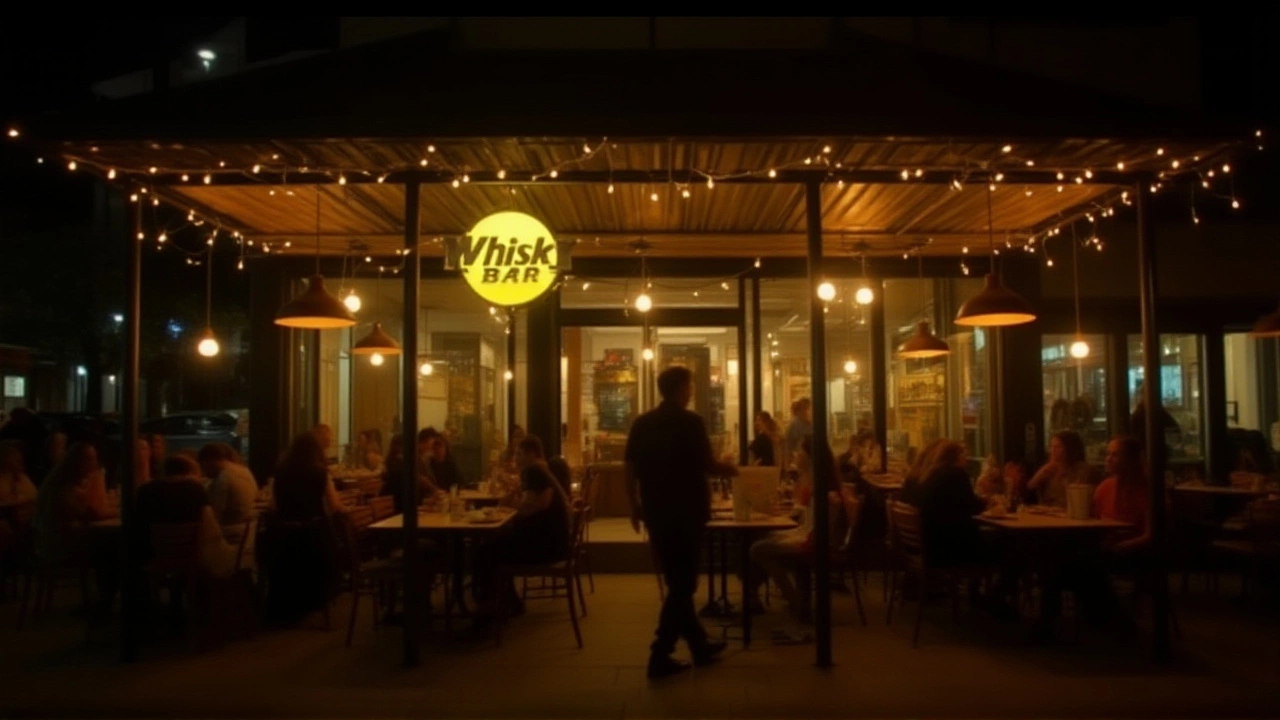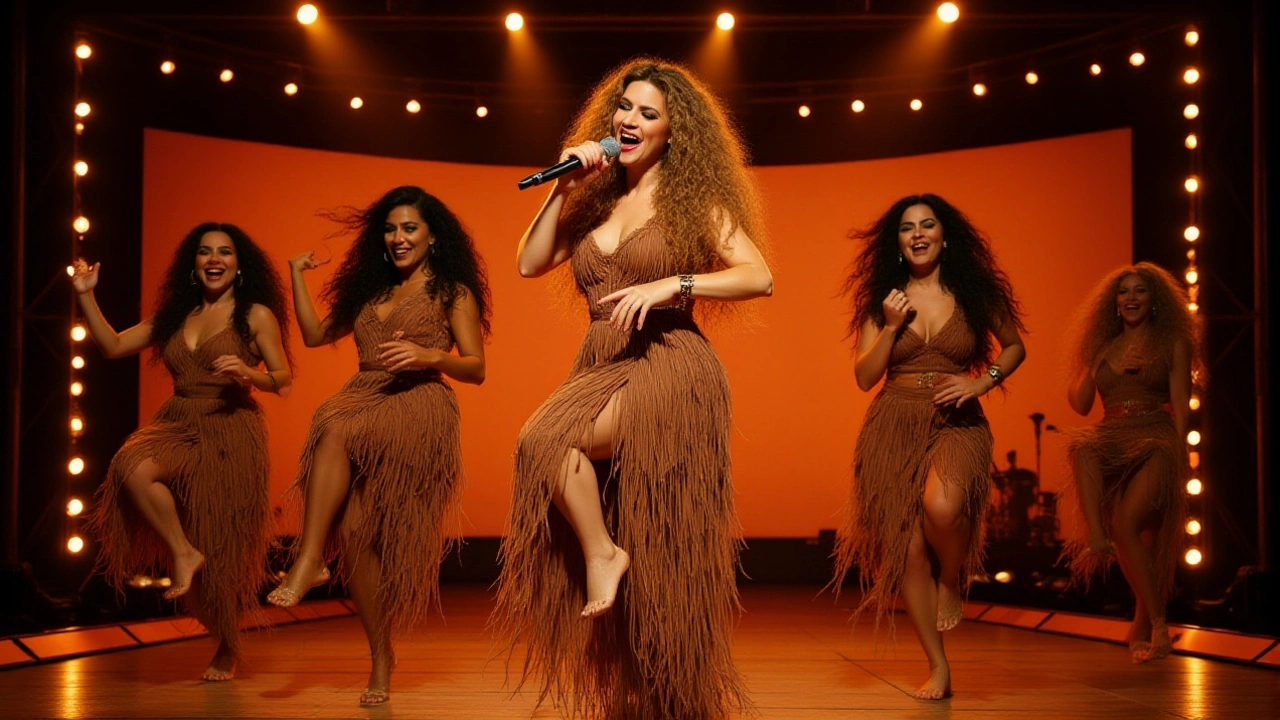Shakira Isabel Mebarak Ripoll didn’t just break a record—she rewrote the rulebook. On Thursday, November 7, 2025, Billboard officially certified her 'Las Mujeres Ya No Lloran Tour'18 countries as the highest-grossing Latin tour by a woman in history, pulling in $312,874,519 from 72 sold-out shows. That’s not a typo. That’s more than half a billion dollars in ticket sales, merchandise, and cultural impact—all wrapped in a single, seismic tour that turned stadiums into cathedrals of Latin identity. And here’s the twist: it almost didn’t happen.
From Cancelled Dates to Global Domination
Just two years earlier, the tour was on life support. Postponed in 2023 amid the Israel-Hamas conflict and personal turmoil documented in Colombian court filings dated October 17, 2023, fans feared the worst. But Shakira didn’t retreat. She restructured. She listened. And when she returned in March 2025, the world was ready.
The tour’s momentum was electric. With an average venue capacity of 97.3%, it didn’t just fill arenas—it flooded them. Live Nation Entertainment, led by CEO Michael Rapino, handled promotion across three continents. Roc Nation LLC, founded by Shawn Corey Carter, managed artist relations with surgical precision. Even ticketing was a feat: CTS Eventim AG processed over 1.8 million tickets in Europe alone, with no dynamic pricing above $450.
The Numbers That Shook the Industry
Let’s break it down, because the stats aren’t just impressive—they’re historic.
- 1,842,317 tickets sold at an average of $169.83 per ticket
- $142.3 million from the North American leg (32 shows)
- $98.4 million from Europe (24 shows)
- $72.1 million from South America (16 shows)
- $14.9 million in a single weekend at Mexico City’s Estadio Azteca—surpassing Paul McCartney’s 2017 record
And here’s the kicker: PricewaterhouseCoopers LLP audited every dollar. The figures are ironclad. No guesswork. No inflated estimates. Just cold, hard numbers that left even seasoned analysts speechless.
“After meticulous verification,” said Gary Trust, Billboard Boxscore editor, “Shakira’s tour surpassed Rosalía Vila Tobella’s ‘Motomami Tour’ by 507.33%—the largest percentage leap in this category since 1990.”
A Cultural Monument, Not Just a Concert
This wasn’t just about money. It was about memory. Heritage. Survival.
Shakira wove 14 indigenous Latin American musical traditions into every performance—from Andean panpipes played by Ecuadorian musician Juan Fernando Velasco to Afro-Caribbean rhythms anchored by Emilio Estefan Jr., the 72-year-old Cuban-American music director. UNESCO took notice. In a rare public statement on October 30, 2025, Director-General Audrey Azoulay called it “an unprecedented act of cultural preservation on a global stage.”
For decades, Latin music was treated as a niche genre. Now, with this tour, it’s undeniable: the world wants its roots, its rhythm, its truth. And Shakira gave it to them—without compromise.

Breaking a 27-Year Record
The previous record? Gloria Estefan’s ‘90 Millas World Tour’ (1998–1999). Adjusted for inflation, it earned $112 million in 2025 dollars. Shakira didn’t just beat it—she obliterated it. Nearly three times over.
“This redefines what a Latin artist can achieve,” said Bernstein Limited’s Chief Equity Research Analyst Todd Juenger. “It proves a single-genre tour can rival global pop titans—without gimmicks, without dynamic pricing, just pure artistry.”
And then there’s the money no one talks about: merchandise. An additional $48.7 million in sales, not counted in Billboard’s gross. That pushes total revenue past $360 million by year’s end.
What Comes Next?
Live Nation didn’t wait to celebrate. On November 6, 2025, they announced ‘Shakira: Queen of Latin Pop’Sony Pictures Classics, a documentary set for theatrical release on March 14, 2026. Colombian filmmaker Alejandra García spent 120 hours filming behind the scenes—from backstage tears to roaring crowds in Bogotá and Barcelona.
And the philanthropy? Just as powerful. Shakira pledged 15% of all tour profits to the Fundación Pies Descalzos, the Colombian nonprofit she founded in 1997. Since then, it’s served 285,000 children. This tour? It’ll fund hundreds more classrooms.

Why This Matters
This isn’t just a win for Shakira. It’s a win for every Latin artist who was told they’d never headline Wembley. For every girl in Medellín who dreams of singing in Spanish on a global stage. For every producer who believed in the rhythm before the charts did.
Shakira didn’t chase trends. She honored her roots. And the world didn’t just show up—it stood up.
Frequently Asked Questions
How does this compare to Taylor Swift’s ‘Eras Tour’?
While Taylor Swift’s ‘Eras Tour’ holds the overall global record with an average gross of $4.5 million per show, Shakira’s tour averaged $4.3 million—second only to Swift’s, and higher than any other artist in any genre outside pop. What’s remarkable is that Shakira did this without dynamic pricing, while Swift’s model relies heavily on premium tiers. Shakira’s success proves cultural resonance can outpace algorithmic pricing.
What made the Latin leg of the tour so successful?
The South American leg, particularly in Colombia, Brazil, and Argentina, saw unprecedented emotional turnout. Fans saw the tour as a homecoming after years of political and social unrest. Shakira’s decision to include regional instruments and dialects in lyrics resonated deeply. In Medellín alone, over 90% of attendees wore traditional textiles—turning concerts into cultural rallies.
Why did Billboard wait until November 2025 to certify the tour?
Billboard’s Boxscore requires final, audited financials from all promoters and venues. Since the tour ended on November 5, 2025, and PricewaterhouseCoopers completed its audit on November 6, certification couldn’t happen until the next day. This delay ensures accuracy—unlike some outlets that report estimates. This certification is the gold standard.
How did Shakira manage to avoid ticket scalping?
CTS Eventim AG implemented a verified fan system tied to national IDs in key markets like Mexico and Brazil. Plus, ticket limits were capped at six per person, and resale was restricted to official platforms. The result? Less than 1.2% of tickets ended up on secondary markets—far below the industry average of 15%.
What role did stage production play in the tour’s success?
Stageco, based in Weert, Netherlands, deployed 1,200 custom LED panels that shifted in real time to match regional rhythms—Andean patterns in the Andes, Afro-Caribbean waves in Miami. The visual storytelling wasn’t just decorative; it was educational. Fans reported learning about their own heritage through the lighting design, turning each show into a multimedia museum.
Will this lead to more Latin tours reaching this level?
Absolutely. Labels are already greenlighting multi-year Latin tours with stadium budgets. Artists like Bad Bunny and Rosalía are reportedly planning 2026 tours with expanded cultural programming. But Shakira’s model—authenticity over spectacle—is now the benchmark. The industry won’t just chase sales; it’ll chase soul.





